
JupyterLab, aka Jupyter, is the latest web-based interactive development environment for notebooks, code, and data. Its flexible interface allows users to configure and arrange workflows in data science, scientific computing, computational journalism, and machine learning. A modular design invites extensions to expand and enrich functionality. In this step by step guide I will show you how to install Jupyter on your Synology NAS using Docker & Portainer.
STEP 1
Please Support My work by Making a Donation.
STEP 2
Install Portainer using my step by step guide. If you already have Portainer installed on your Synology NAS, skip this STEP. Attention: Make sure you have installed the latest Portainer version.
STEP 3
Make sure you have a synology.me Wildcard Certificate. Follow my guide to get a Wildcard Certificate. If you already have a synology.me Wildcard certificate, skip this STEP.
STEP 4
Go to Control Panel / Login Portal / Advanced Tab / click Reverse Proxy. Follow the instructions in the image below.
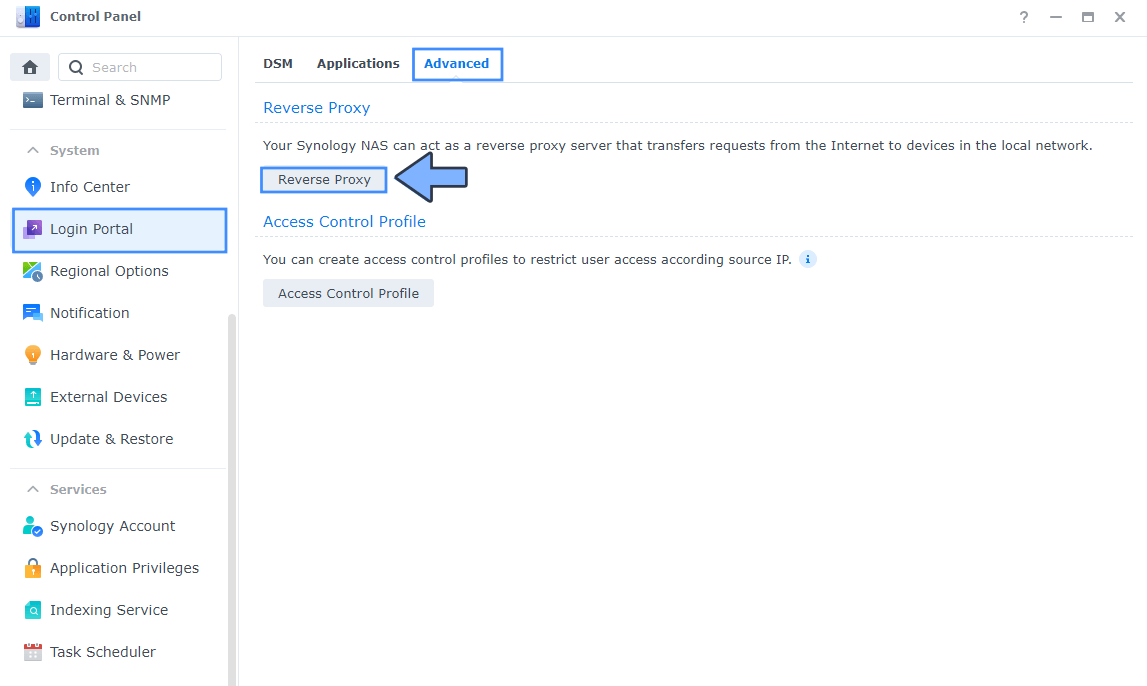
STEP 5
Now click the “Create” button. Follow the instructions in the image below.
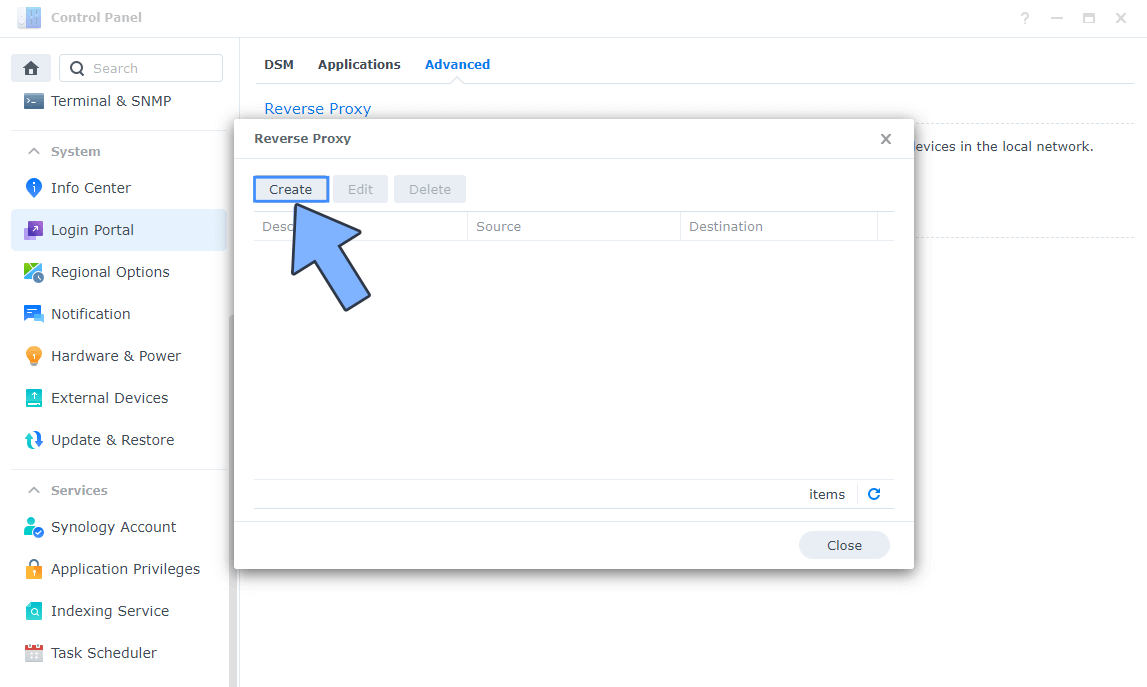
STEP 6
After you click the Create button, the window below will open. Follow the instructions in the image below.
On the General area, set the Reverse Proxy Name description: type in Jupyter. After that, add the following instructions:
Source:
Protocol: HTTPS
Hostname: jupyter.yourname.synology.me
Port: 443
Check Enable HSTS
Destination:
Protocol: HTTP
Hostname: localhost
Port: 10235

STEP 7
On the Reverse Proxy Rules click the Custom Header tab. Click Create and then, from the drop-down menu, click WebSocket. After you click on WebSocket, two Header Names and two Values will be automatically added. Click Save. Follow the instructions in the image below.

STEP 8
Go to Control Panel / Network / Connectivity tab/ Check Enable HTTP/2 then click Apply. Follow the instructions in the image below.
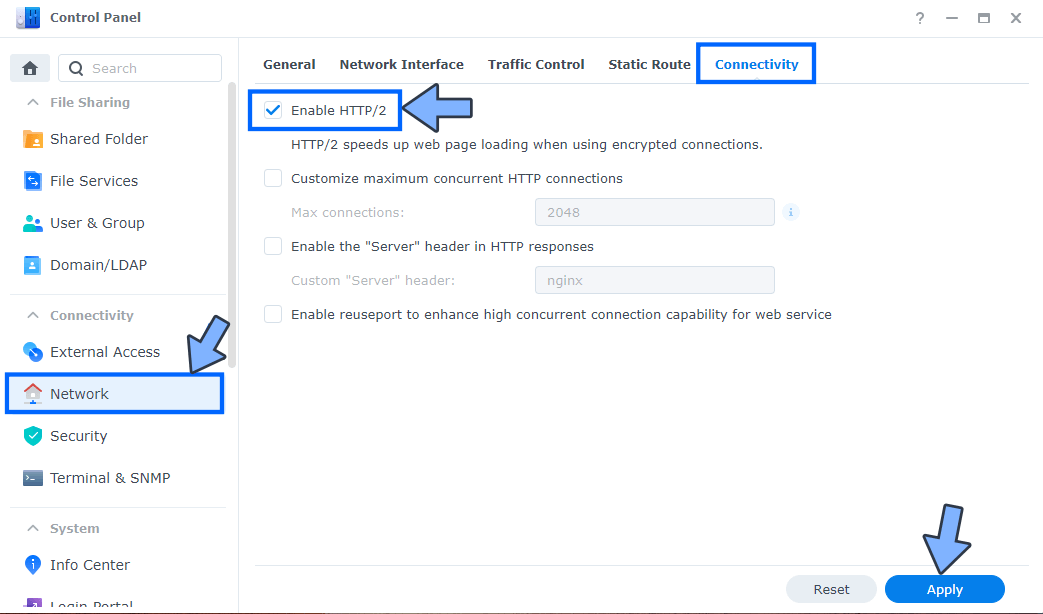
STEP 9
Go to Control Panel / Security / Advanced tab/ Check Enable HTTP Compression then click Apply. Follow the instructions in the image below.

STEP 10
Go to File Station and open the docker folder. Inside the docker folder, create one new folder and name it jupyter. Follow the instructions in the image below.
Note: Be careful to enter only lowercase, not uppercase letters.
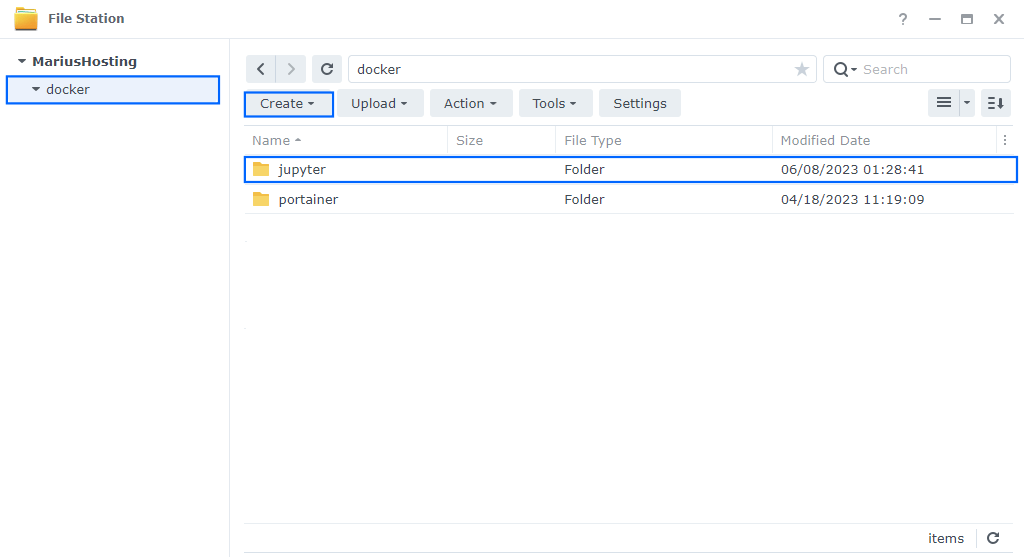
STEP 11
Right click on the jupyter folder that you have previously created at STEP 10 then click Properties. Follow the instructions in the image below.
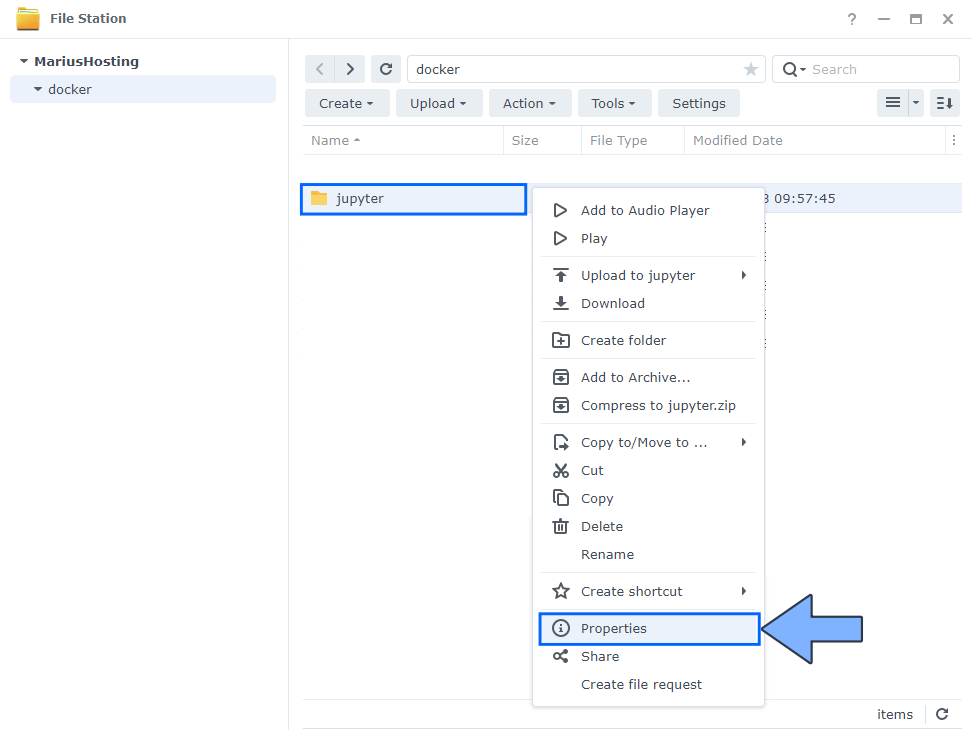
STEP 12
Go to the Permission tab then click Advanced options. From the drop-down menu choose “Make inherited permissions explicit“. Follow the instructions in the image below.
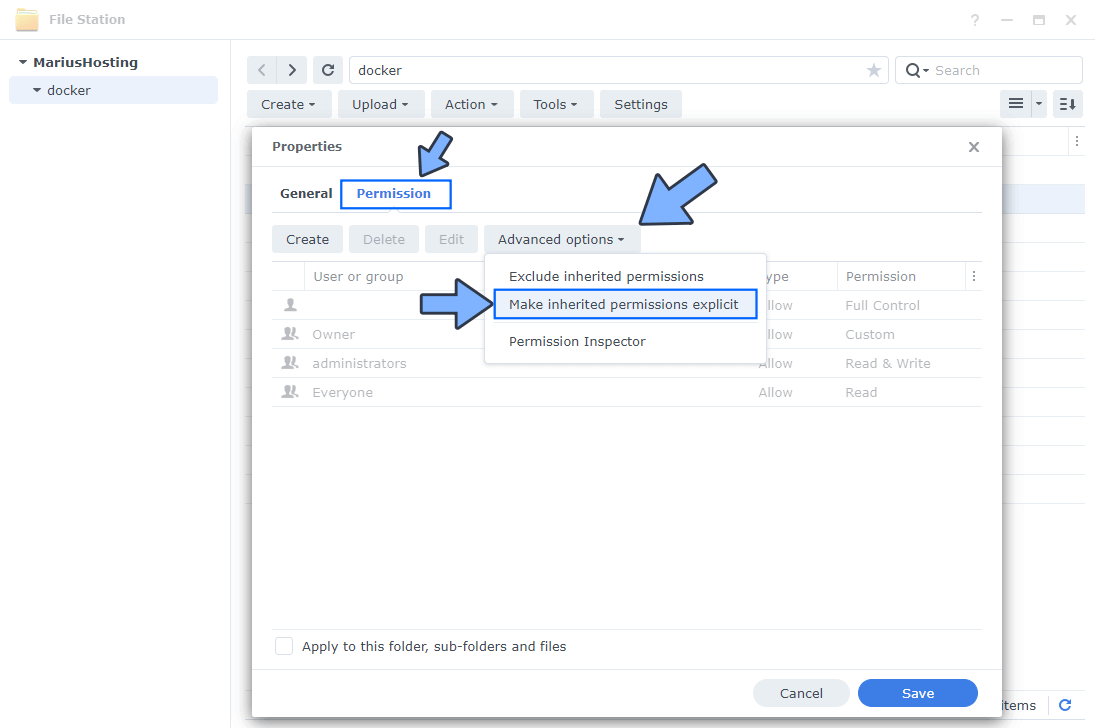
STEP 13
Select Everyone then click the Edit tab. Follow the instructions in the image below.
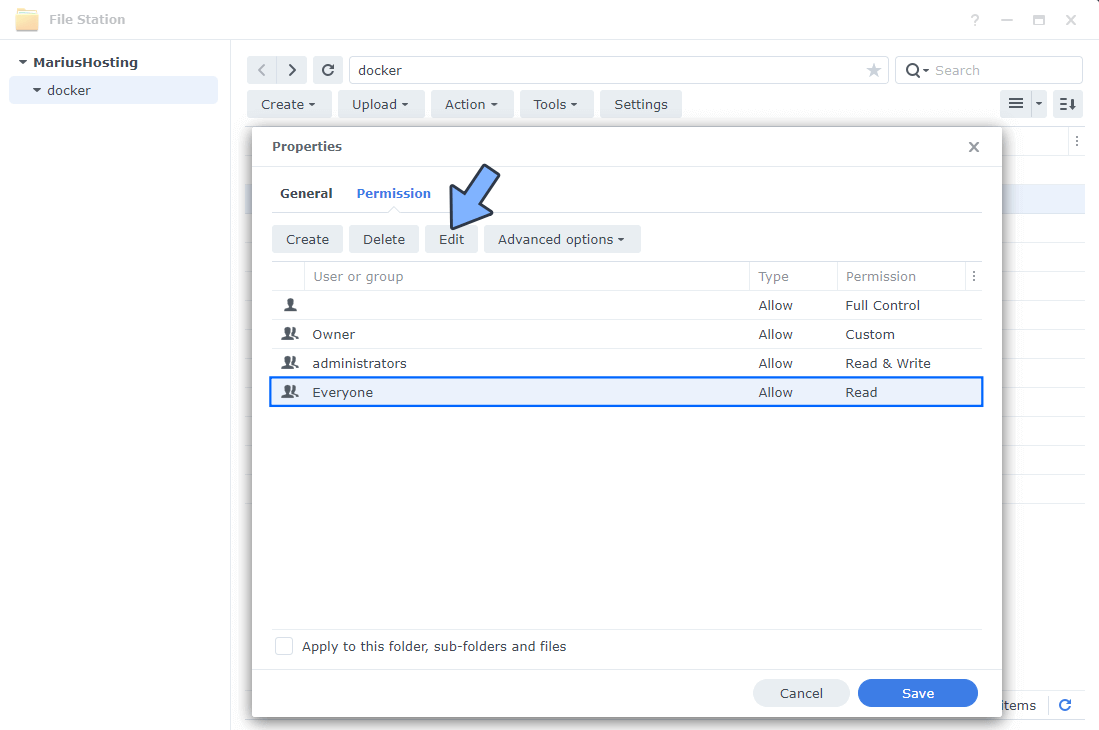
STEP 14
Check all Read and Write Permissions. Click Done. Follow the instructions in the image below.

STEP 15
After you click Done on STEP 14, check “Apply to this folder, sub-folders and files“. Click Save. Follow the instructions in the image below.
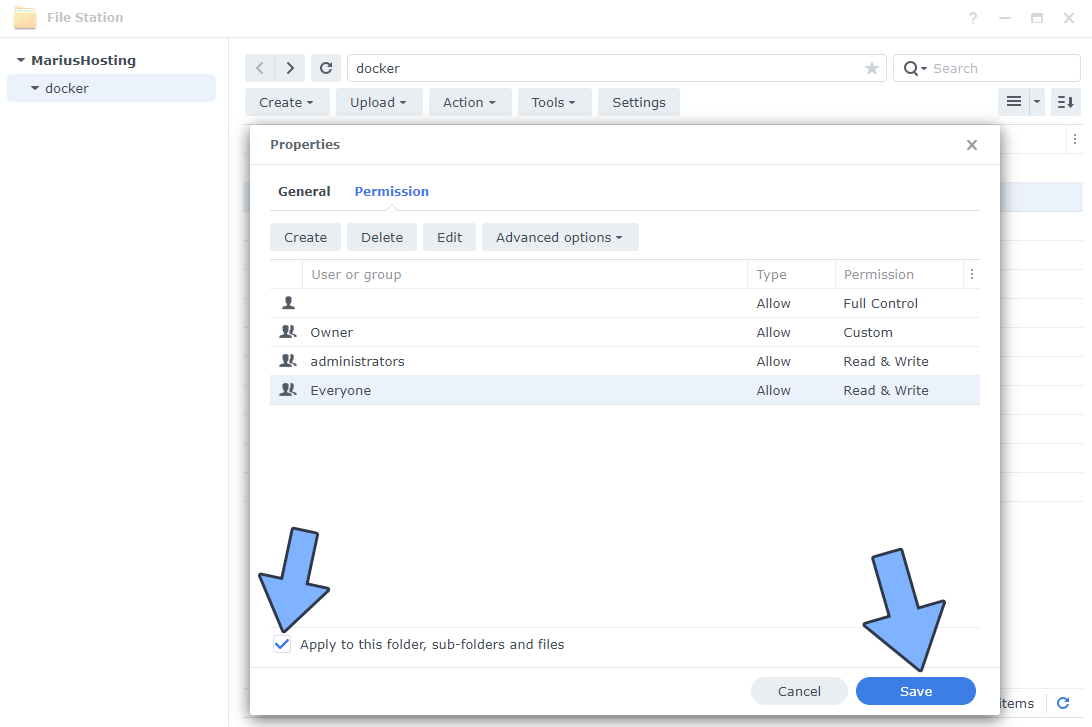
STEP 16
Log into Portainer using your username and password. On the left sidebar in Portainer, click on Stacks then + Add stack. Follow the instructions in the image below.

STEP 17
In the Name field type in jupyter. Follow the instructions in the image below.
services:
jupyter:
container_name: Jupyter
image: jupyter/datascience-notebook:latest
mem_limit: 3g
cpu_shares: 768
security_opt:
- no-new-privileges:true
volumes:
- /volume1/docker/jupyter:/home/jovyan/work:rw
ports:
- 10235:8888
restart: on-failure:5
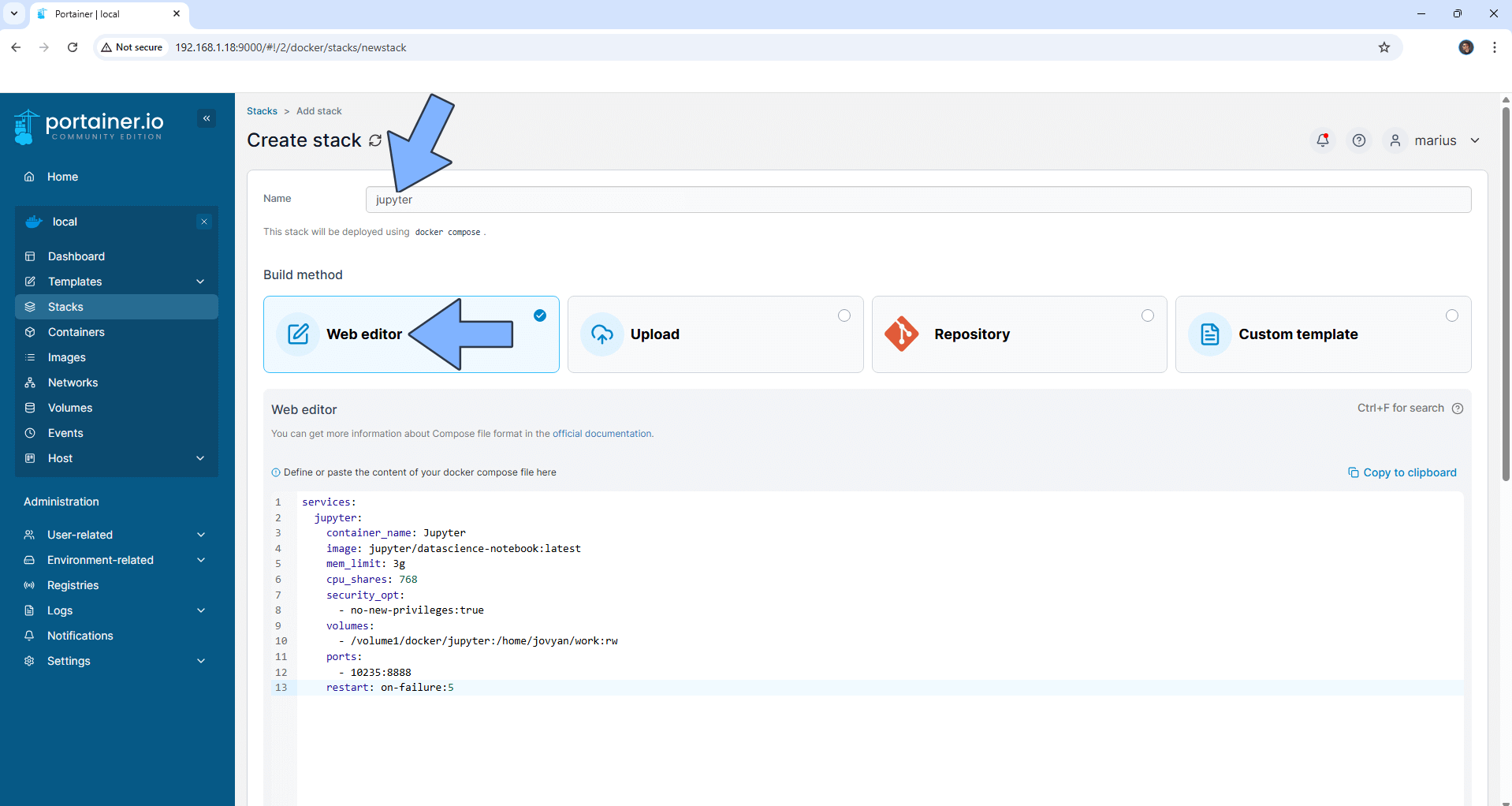
STEP 18
Scroll down on the page until you see a button named Deploy the stack. Click on it. Follow the instructions in the image below. The installation process can take up to a few minutes. It will depend on your Internet speed connection.
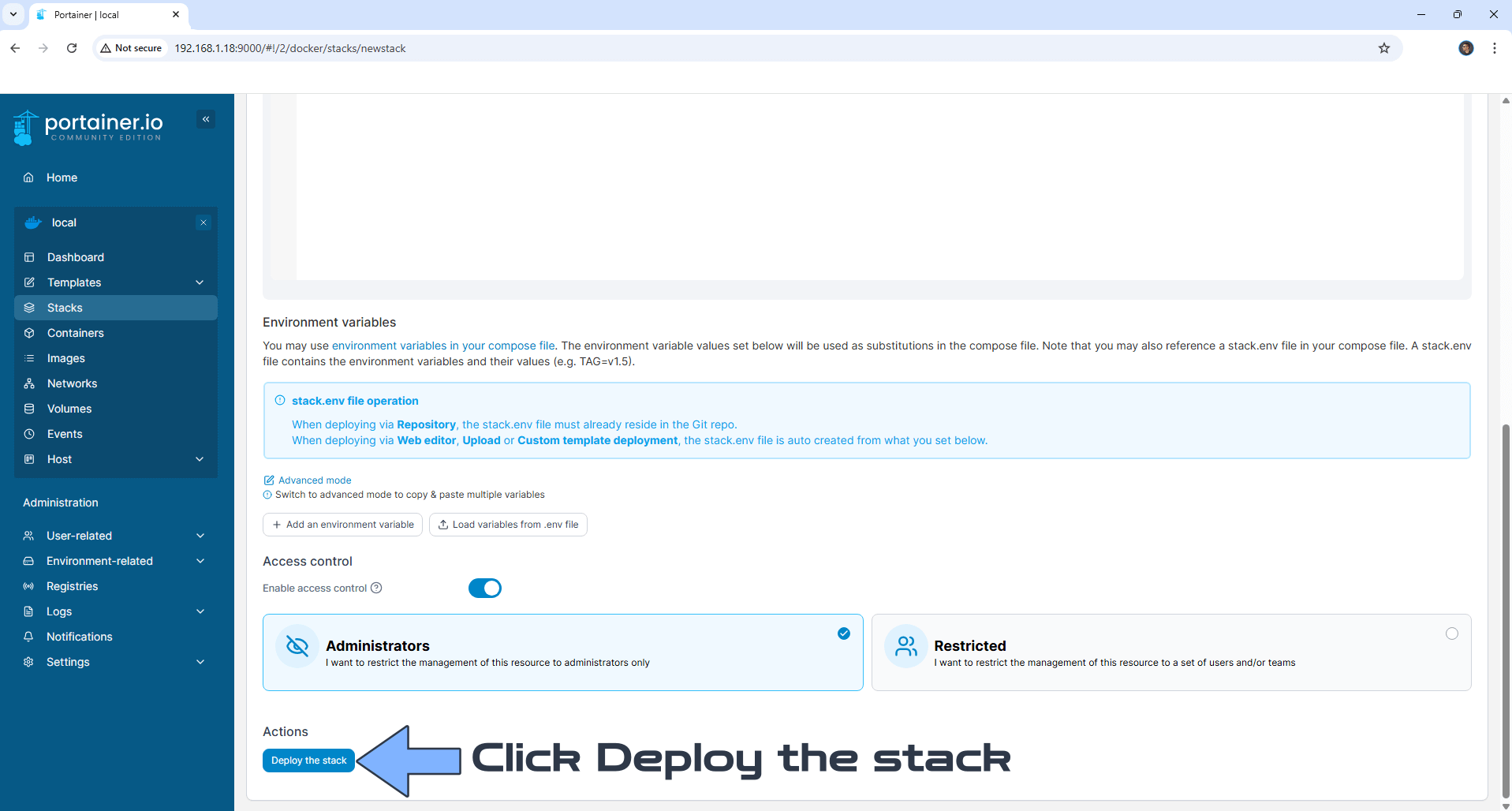
STEP 19
If everything goes right, you will see the following message at the top right of your screen: “Success Stack successfully deployed“.
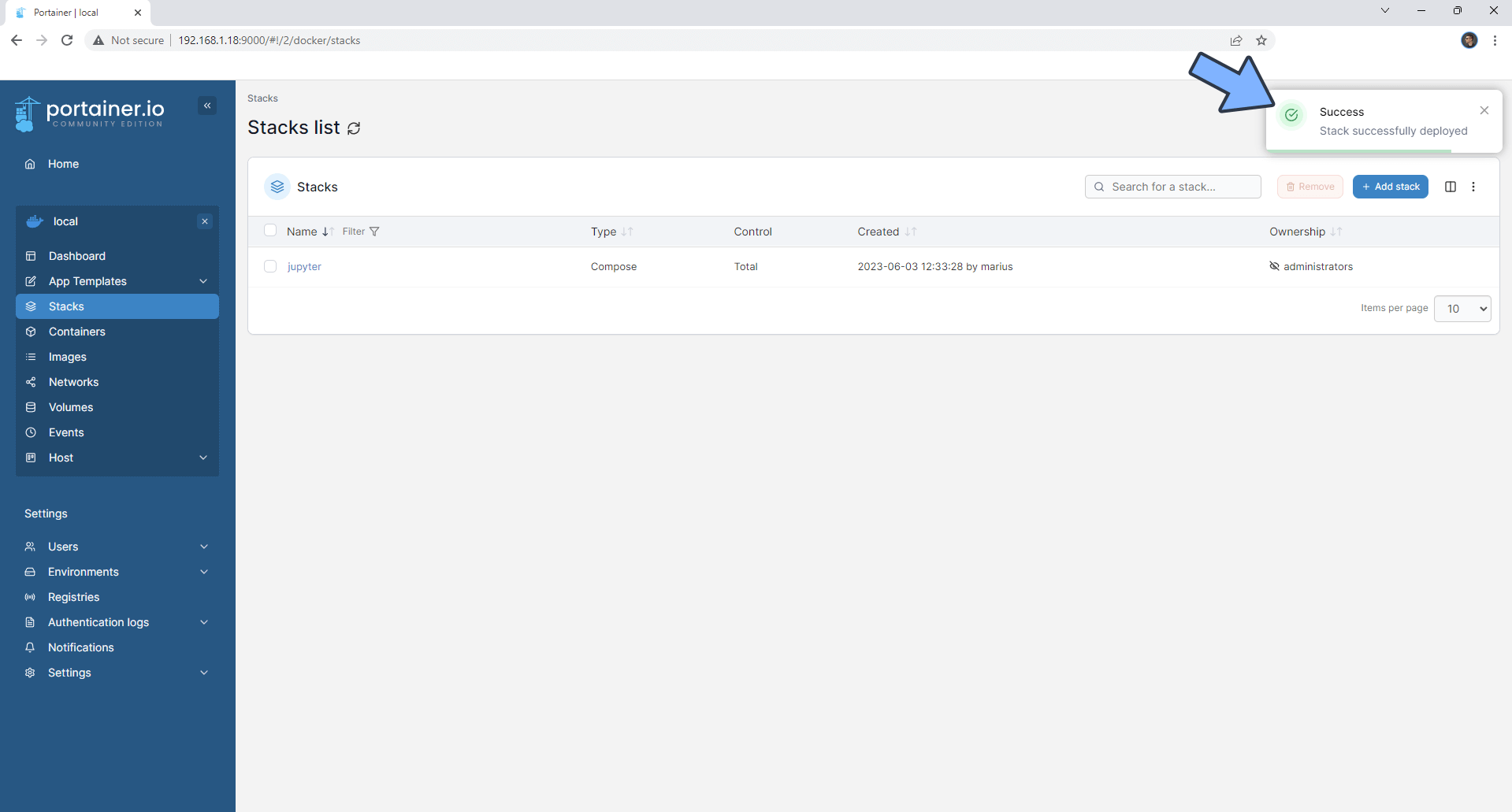
STEP 20
Create Password. On the left sidebar in Portainer, click Containers. Identify your Jupyter instance, then click on the little terminal icon. Follow the instructions in the image below.
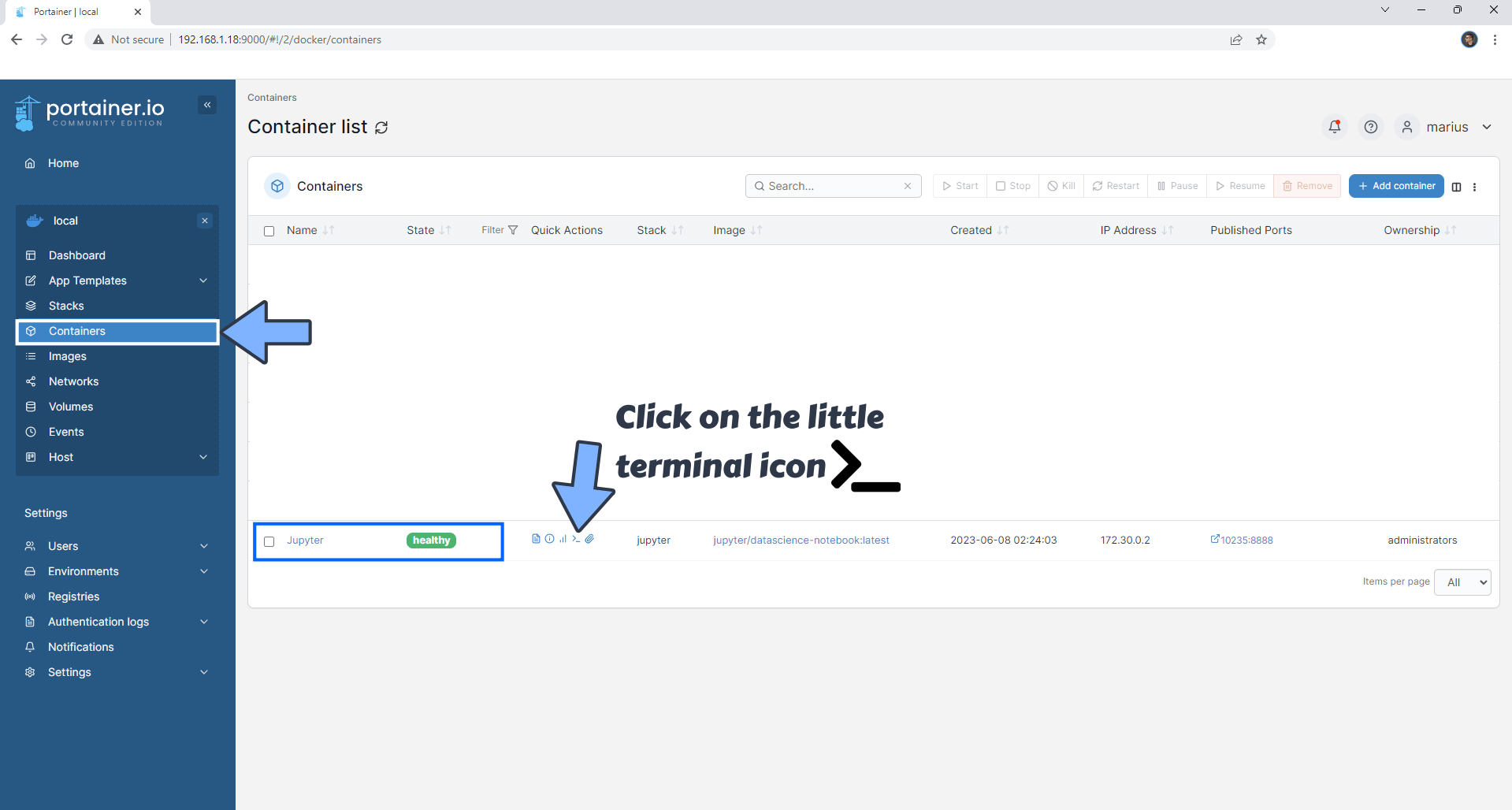
STEP 21
After you click on the little terminal icon at STEP 20, a new page will open. Click Connect. Follow the instructions in the image below.
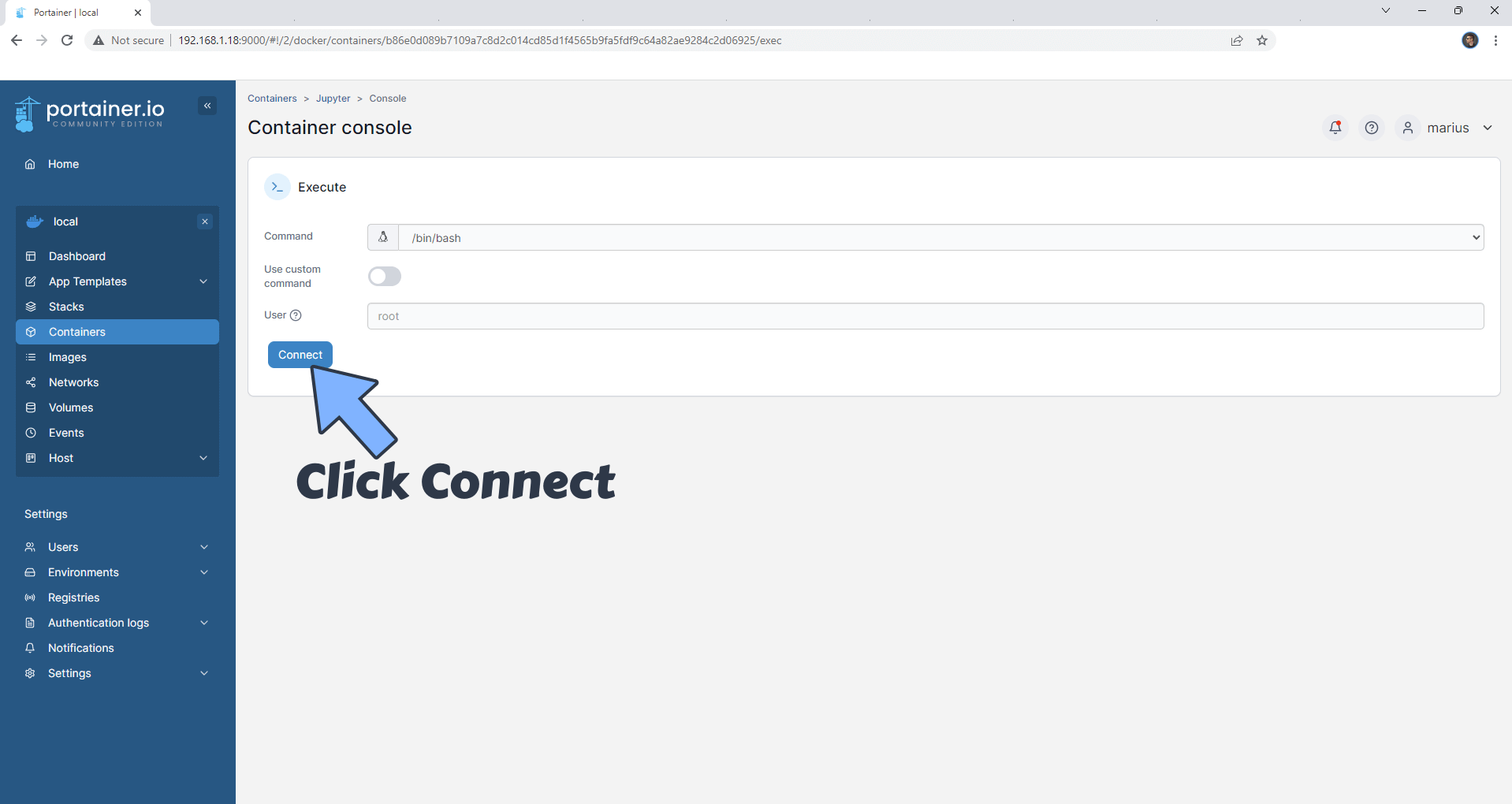
STEP 22
After you click Connect at STEP 21, a Console will open. Copy paste the code below and confirm by pressing Enter on your keyboard to start the server password creation. Follow the instructions in the image below.
jupyter server password
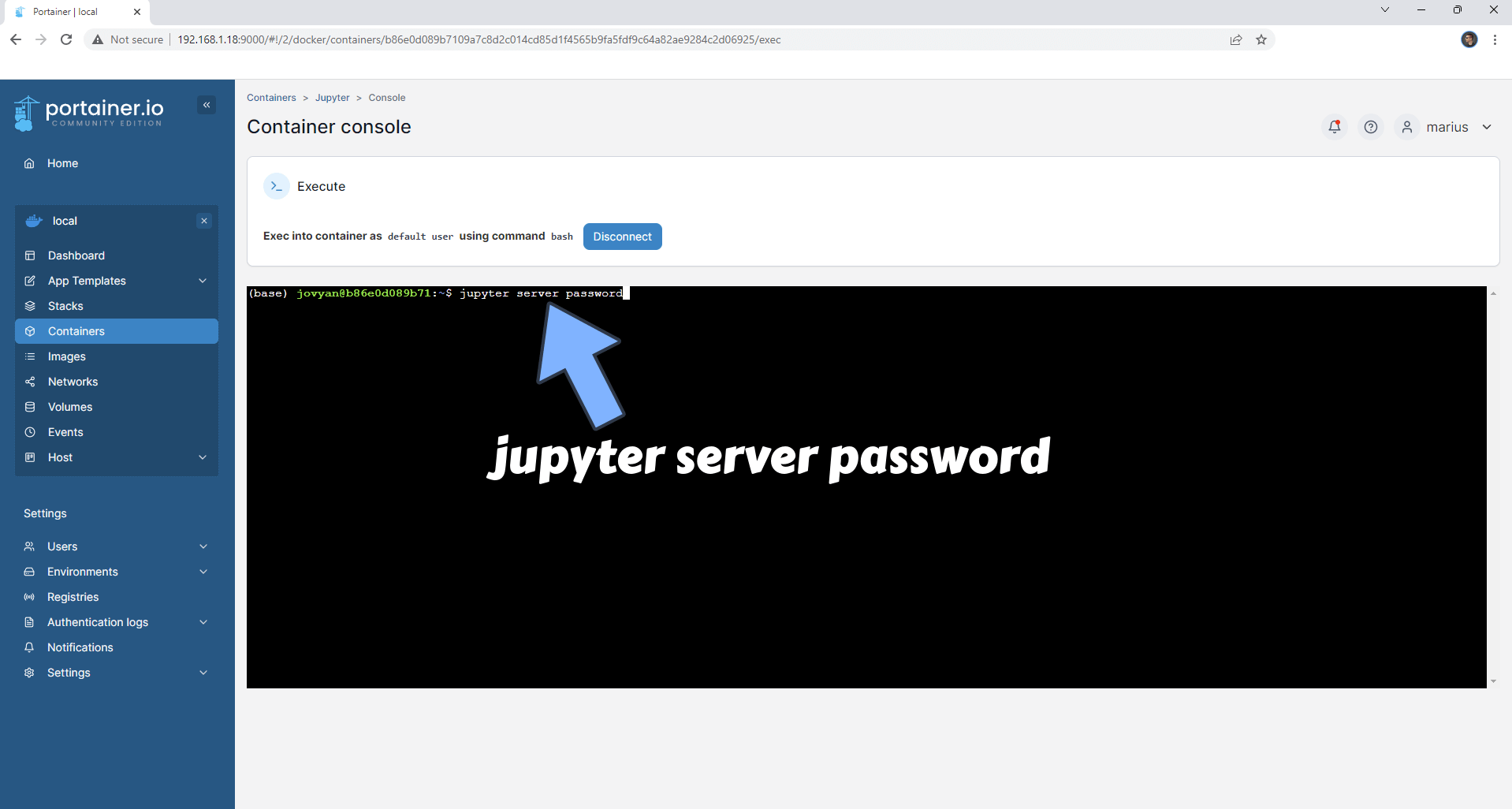
STEP 23
Type in your own password then confirm by pressing Enter on your keyboard. Follow the instructions in the image below.

STEP 24
Confirm again your own password then press Enter on your keyboard. Follow the instructions in the image below.
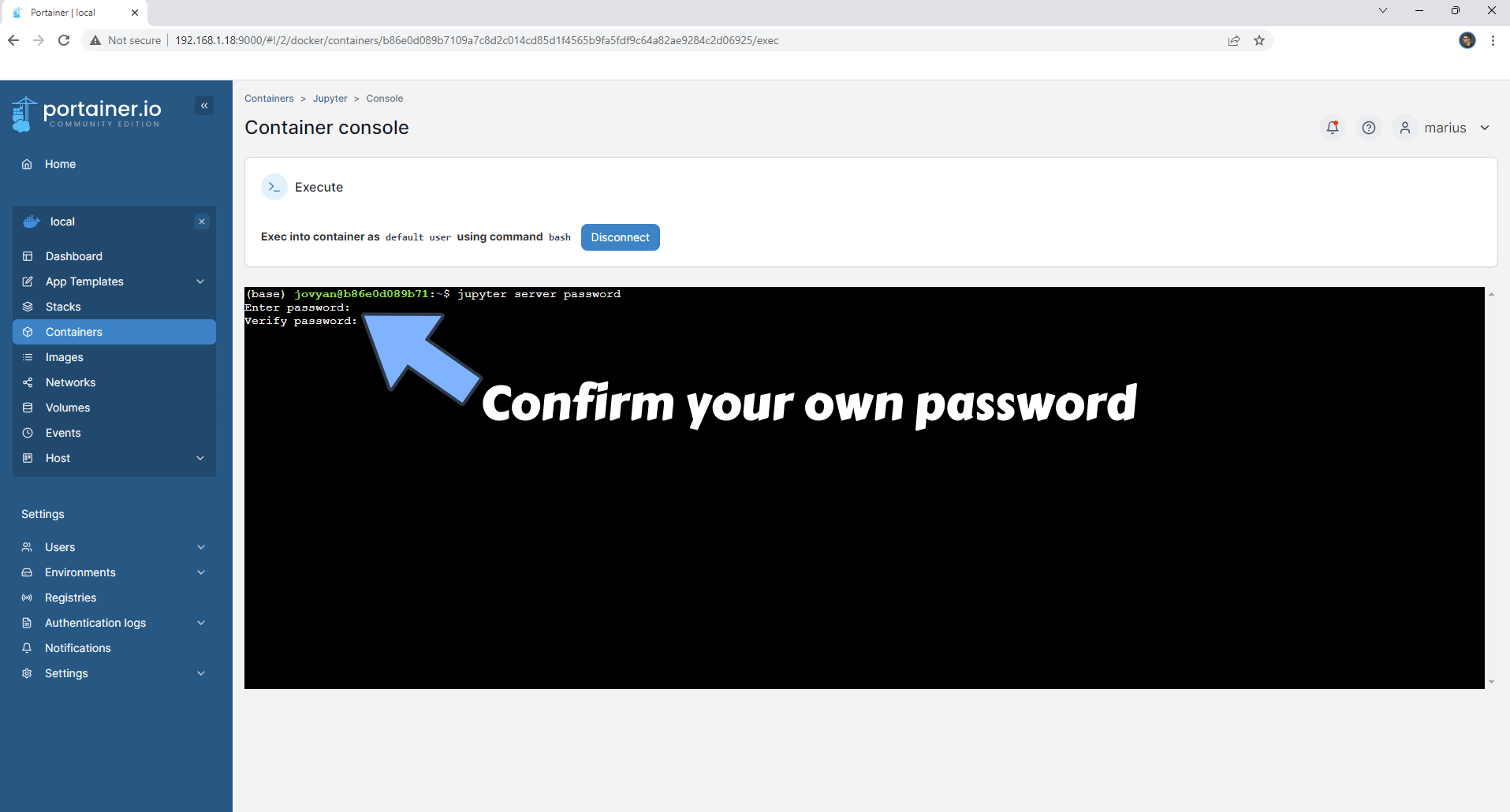
STEP 25
Done! The password is successfully created.
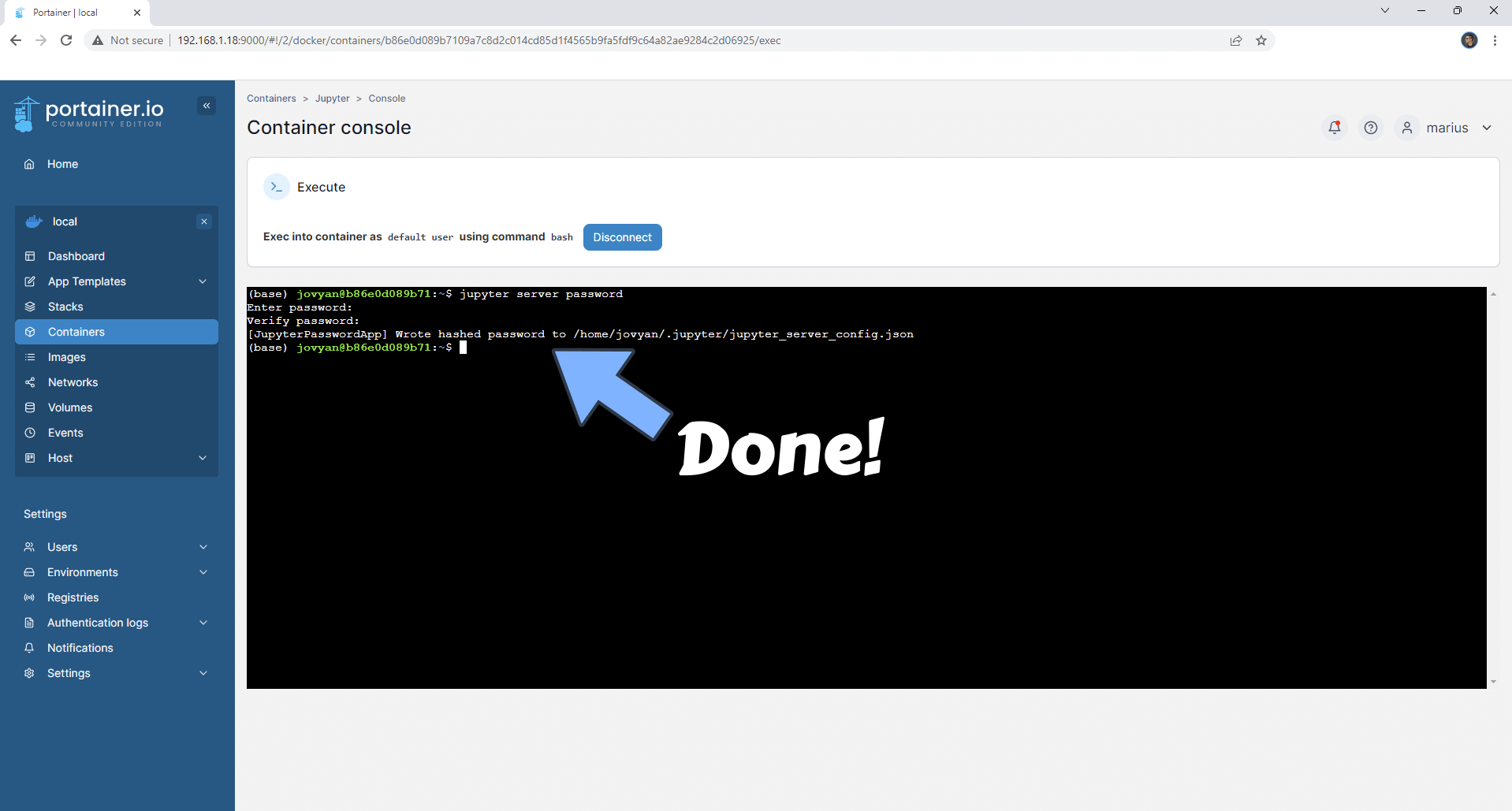
💡Note: At this point, you can also install some language packages like German. Just type in pip install jupyterlab-language-pack-de-DE in the console, then press enter on your keyboard to start the language package installation process.
STEP 26
On the left sidebar in Portainer, click Containers. Identify your Jupyter instance, select it then click Restart. Follow the instructions in the image below.
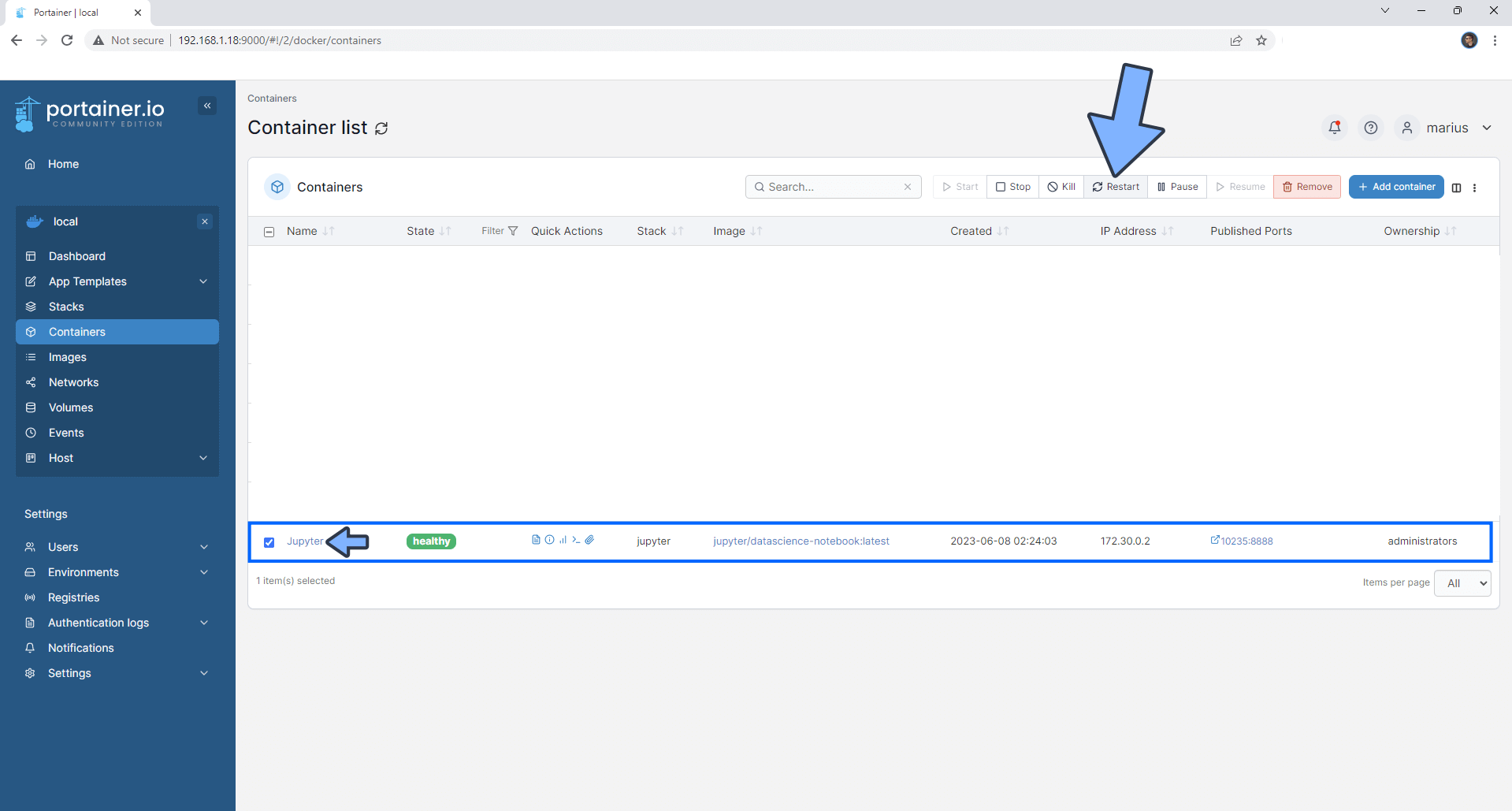
STEP 27
🟢Please Support My work by Making a Donation. Almost 99,9% of the people that install something using my guides forget to support my work, or just ignore STEP 1. I’ve been very honest about this aspect of my work since the beginning: I don’t run any ADS, I don’t require subscriptions, paid or otherwise, I don’t collect IPs, emails, and I don’t have any referral links from Amazon or other merchants. I also don’t have any POP-UPs or COOKIES. I have repeatedly been told over the years how much I have contributed to the community. It’s something I love doing and have been honest about my passion since the beginning. But I also Need The Community to Support me Back to be able to continue doing this work.
STEP 28
Now open your browser and type in your HTTPS/SSL certificate like this https://jupyter.yourname.synology.me that you have previously created at STEP 6. In my case it’s https://jupyter.mariushosting.synology.me If everything goes right, you will see the Jupyter Login page. Type in your own password that you have previously created at STEP 24 then click Log in. Follow the instructions in the image below.
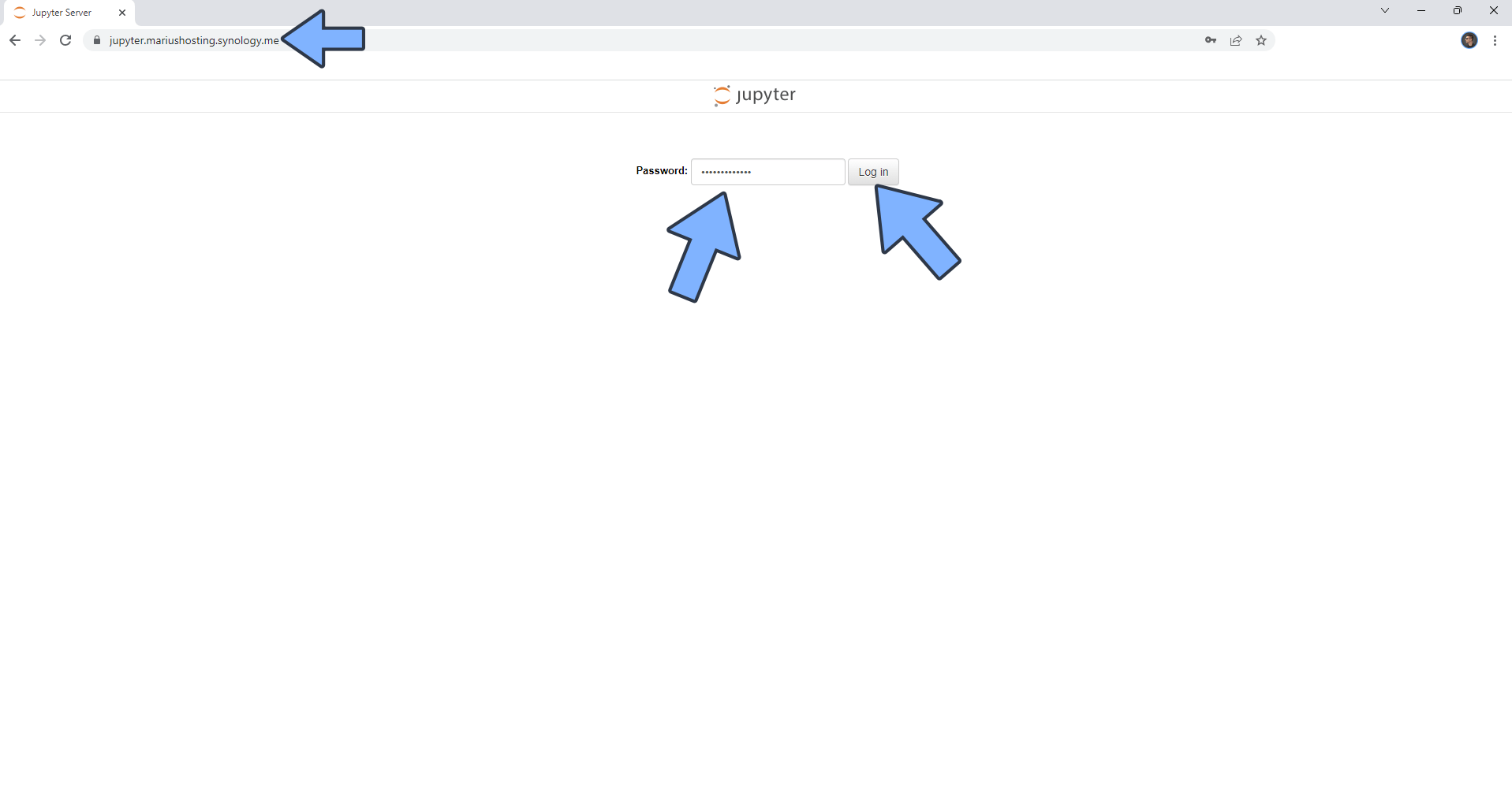
STEP 29
Your Jupyter dashboard at a glance!
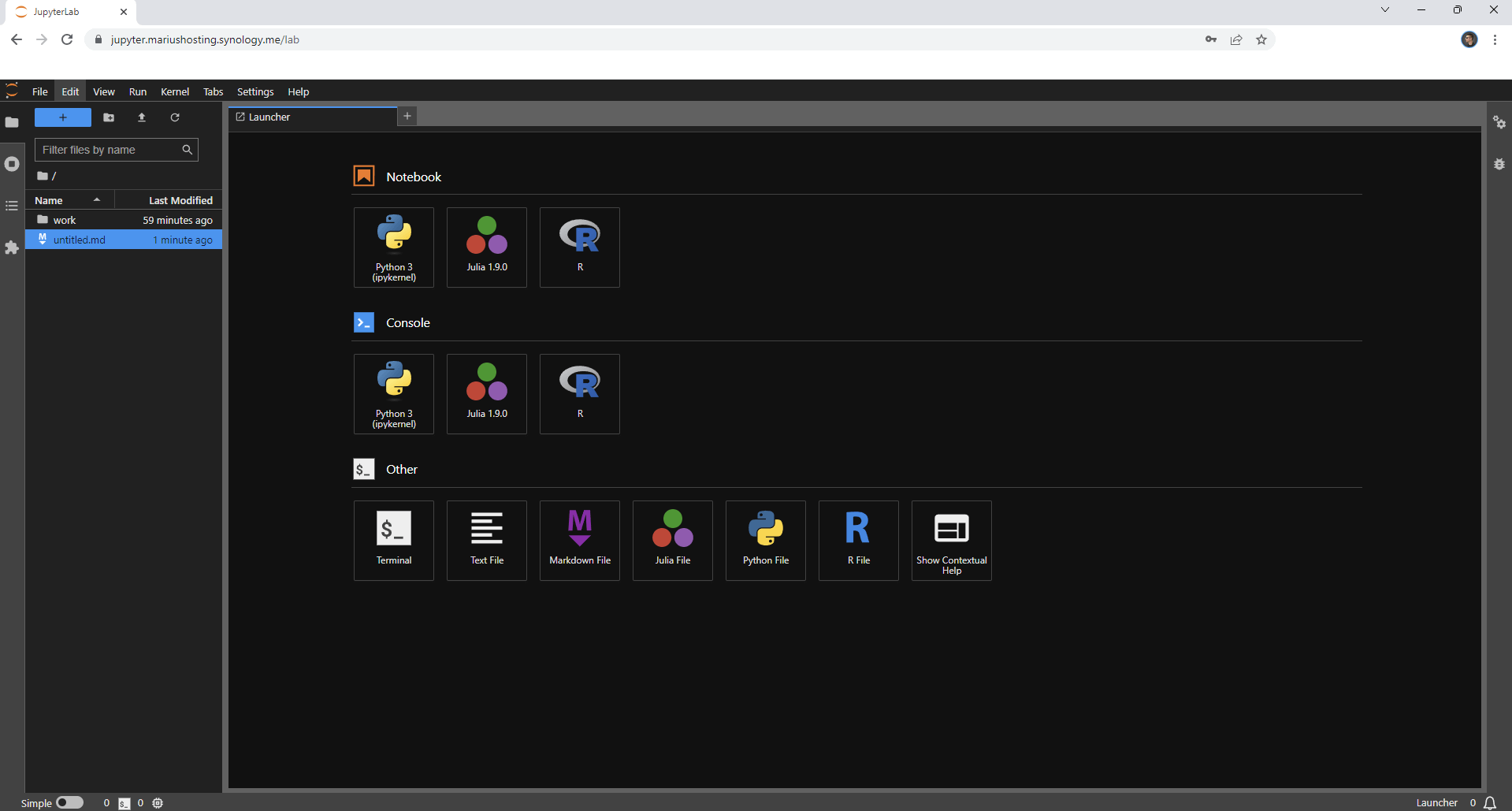
Enjoy Jupyter!
If you encounter issues by using this container, make sure to check out the Common Docker issues article.
Note: Can I run Docker on my Synology NAS? See the supported models.
Note: How to Back Up Docker Containers on your Synology NAS.
Note: Find out how to update the Jupyter container with the latest image.
Note: How to Free Disk Space on Your NAS if You Run Docker.
Note: How to Schedule Start & Stop For Docker Containers.
Note: How to Activate Email Notifications.
Note: How to Add Access Control Profile on Your NAS.
Note: How to Change Docker Containers Restart Policy.
Note: How to Use Docker Containers With VPN.
Note: Convert Docker Run Into Docker Compose.
Note: How to Clean Docker.
Note: How to Clean Docker Automatically.
Note: Best Practices When Using Docker and DDNS.
Note: Some Docker Containers Need WebSocket.
Note: Find out the Best NAS Models For Docker.
Note: Activate Gmail SMTP For Docker Containers.
This post was updated on Tuesday / May 13th, 2025 at 1:53 PM
